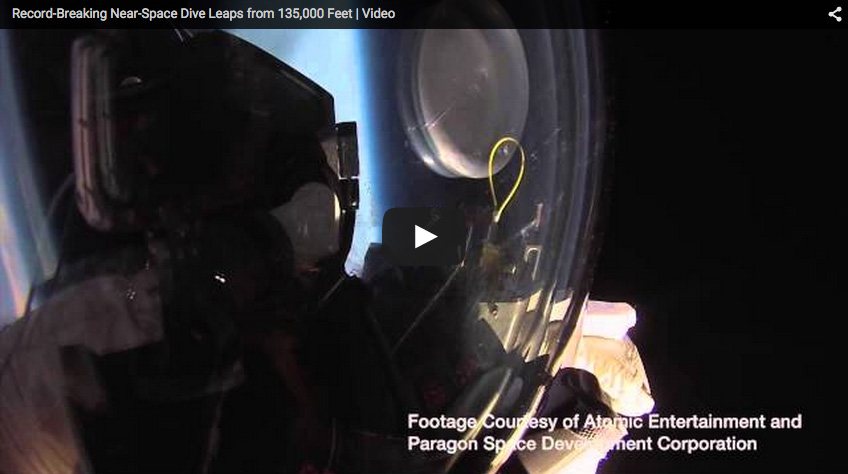Almost exactly two years from the date of Felix Baumgartner’s hugely hyped, Red Bull-sponsored space dive, a computer scientist quietly and secretly dove from an even higher elevation from under his own helium balloon.
On October 14, 2012, Baumgartner jumped from 128,100 feet (24 miles) to set the world record for the highest-altitude free fall dive. Reaching a top speed of 843.6 miles per hour during his plunge back to Earth, he smashed through the sound barrier (767 mph) before successfully deploying his parachute.
However, while Baumgartner and his team soaked up the media attention, Google Senior Vice President Alan Eustace was quietly finishing the final stages of his own stratosphere dive— one that took him three years of careful planning.
On October 24, 2014, Eustace dangled under a helium balloon, ascending 1,600 feet per minute until he was a full 25 miles off of the ground. At 135,890 feet, Eustace cut himself loose with the use of a small explosive device.
At the peak of his descent back to Earth, the Google executive hit a top speed of 822 mph, setting off a human sonic boom that was reportedly heard by spectators on the ground. Fifteen minutes after jumping, Eustace was back on the ground and the new owner of the human aviation record for the highest free fall dive.
So why didn’t the public hear about this incredible event? Alan Eustace told The New York Times that his company had offered to help with his record attempt, but he didn’t want it to turn into a corporate marketing stunt for Google.
And in case you were wondering, it took 35,000 cubic feet of helium to get the Google SVP high enough to beat the space dive record. That’s equal to 120.27 large steel helium cylinders, or 1,296.29 small aluminum helium tanks!
Sources: Paragon Space Development Corporation, The New York Times


